Day 1 of a three day Late Autumn Tour. We were blessed with nice weather today, dry with some sunny intervals, with a fresh SW breeze in the morning which dropped steadily through the afternoon.
We were just loading up the minibus outside the guest house in Hindolveston first thing this morning, when we heard ‘glipping’ calls above and looked up to see a flock of about ten Common Crossbills flying low overhead. Unfortunately they didn’t drop into the fir tree next to the minibus, despite it sporting some very nice cones, but carried on and they were quickly lost to view over the neighbouring houses. Very scarce birds here in the village most years, so a big surprise here, and a nice way to start our tour.
Our first destination this morning was Cley and we headed for the beach car park. There were a few Gannets flying past offshore as we got out of minibus. There had been a big movement of Kittiwakes offshore yesterday afternoon, thousands strong, so we wanted to see if this was continuing and if anything else was moving today. The Kittiwakes had largely dried up, although we did eventually pick up a few distant ones passing this morning, but there was still a good variety of other birds moving.
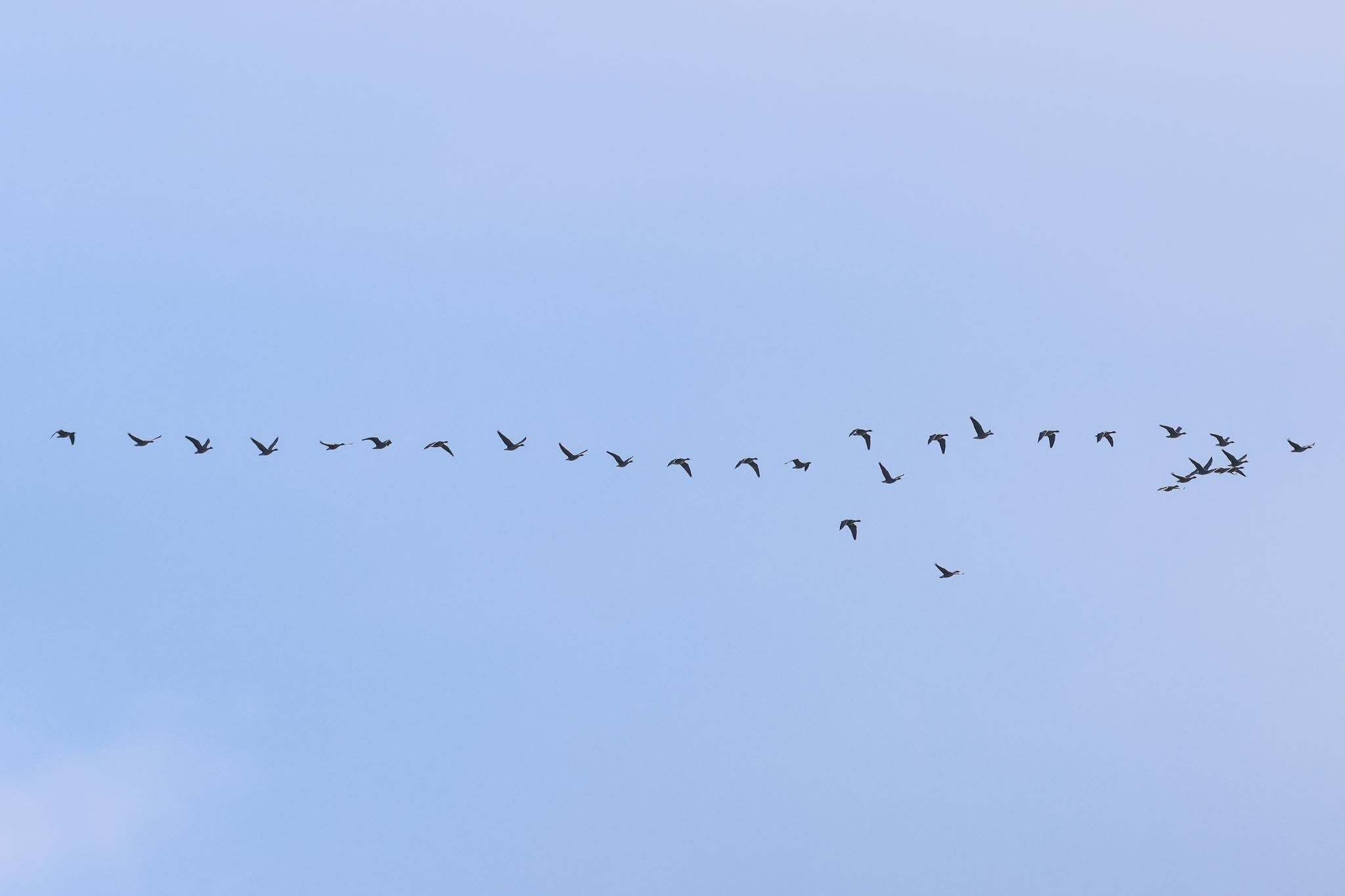
As we stood and scanned, a succession of small flocks of Pink-footed Geese flew in over the sea, presumably coming down from Scotland or NW England where they had stopped first having left Iceland earlier in the autumn. As they came in overhead we could hear their yelping calls. A trickle of Brent Geese and small groups of Wigeon and Teal flew past too, with a few Tufted Duck with them, plus some Common Scoter, and a single pair of Gadwall, all coming in from the continent for the winter.
A few Red-throated Divers flew past close in and a Great Crested Grebe headed west offshore. A Razorbill flew east just off the beach, catching the morning sunlight. A handful of waders were coming in too – a lone Curlew, a couple of Knot, a single Redshank, a couple of small groups of Dunlin.
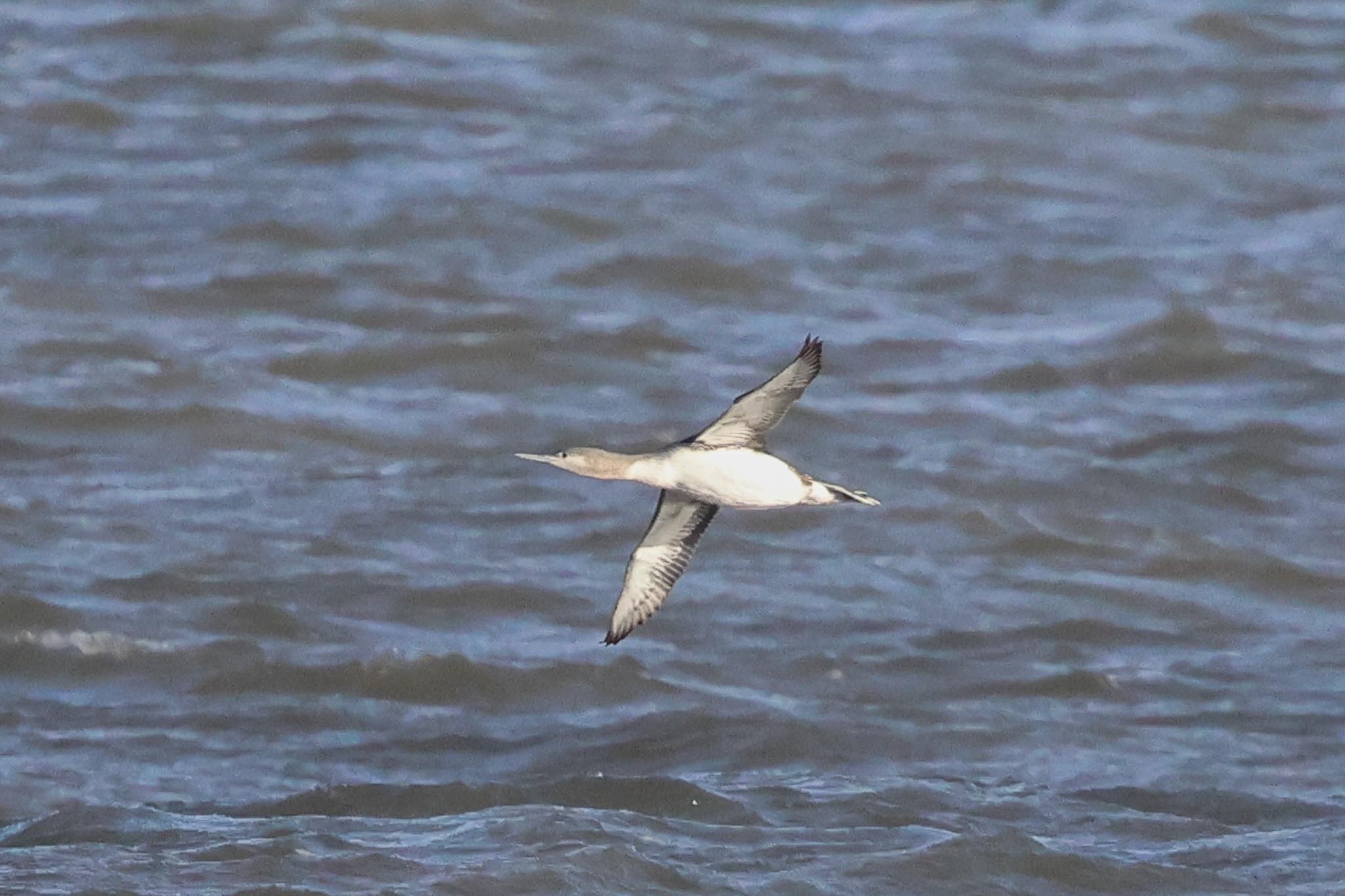
There were fewer passerines arriving today – a single Skylark came past well offshore and a Rock Pipit flew along the beach. We picked up a small bird coming in, quite a long way out, and we followed it for a while until it got closer and we could see it was a Reed Bunting. Eventually it came in over the beach next to the shelter, close to where we were standing. Amazing to think it had just made it here from Scandinavia.
Most of the terns are summer visitors and have long since left us for warmer climes, but we had seen a single late Sandwich Tern fly past us earlier. We had just packed up our scopes when someone shouted to let us know a juvenile Arctic Tern was coming, so we put the scopes up again and managed to get on it, as it turned and went back east. We were about to go again and spotted a larger flock of Dunlin flying past just beyond the beach. We noticed a darker bird in with them, a single Purple Sandpiper. Then another shout and we turned our attention to a flock of swans coming in – there were eleven of them, they looked like Whooper Swans, but they were very distant away to the NE.
Finally we managed to tear ourselves away. We decided to head to Salthouse Beach Road to look for the Long-tailed Duck which has been lingering on the pools there. However, we were just driving towards the village when we noticed a group of swans on one of the pools out on the back of the grazing marsh. We parked on the verge in front of the Dun Cow and got out to check. They were eleven Whooper Swans – the birds we had just seen flying in off the sea! They spent a bit of time swimming round and preening, before they went to sleep – very tiring, flying in all that way. They had probably just arrived from Iceland.
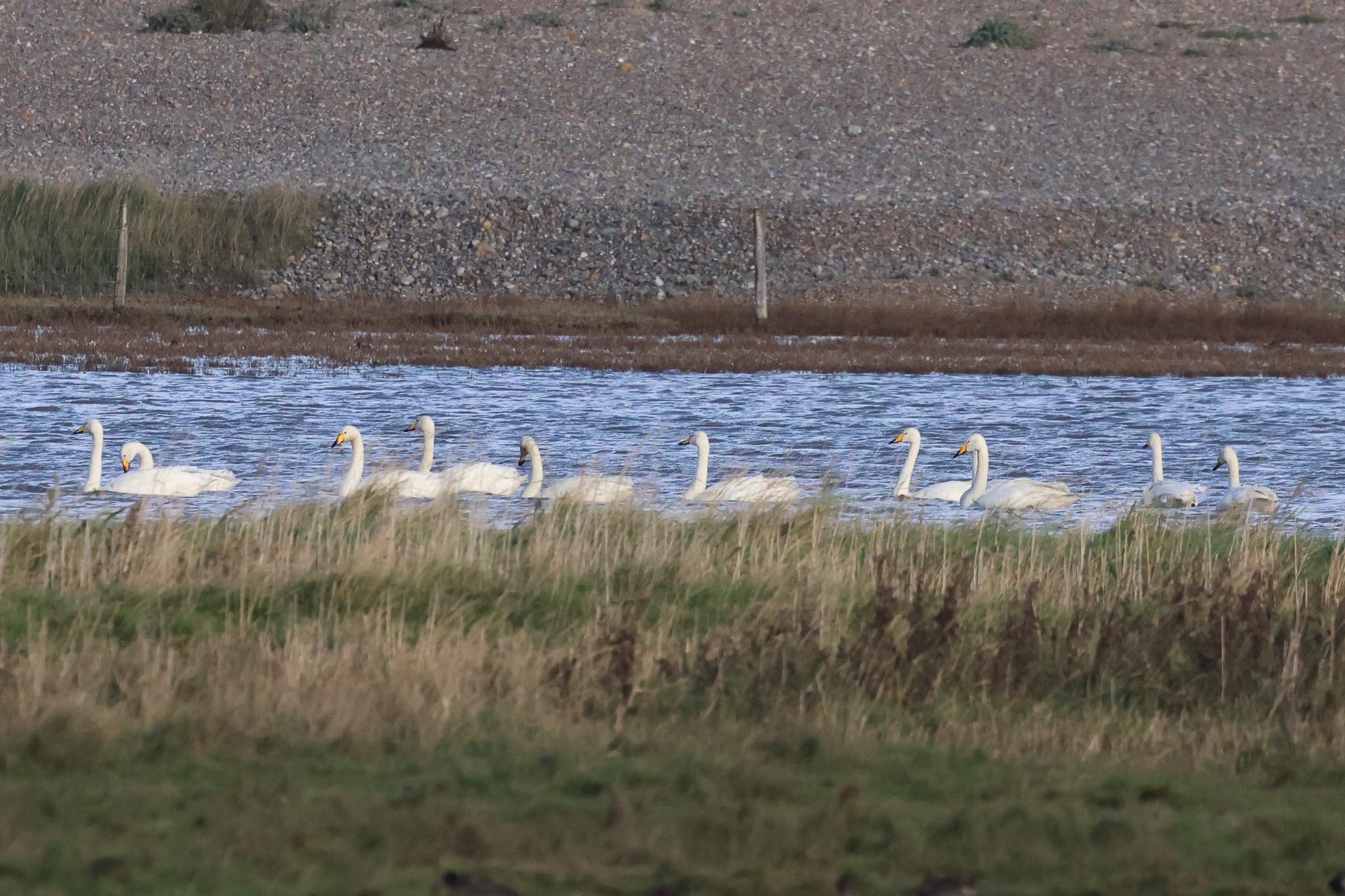
There was lots of activity here too. A couple of Marsh Harriers flew back and forth over the reeds and we found a single Ruff in with the Lapwings out on the grass. Four Common Snipe flew over high, possibly fresh in. There were lots of Wigeon and Teal on the pools, flushed by the Marsh Harriers, and a couple of Canada Geese. A lone Redwing dropped out of the sky and into the grass but disappeared from view. A Stonechat kept perching up on the reeds briefly.
We drove on to Beach Road and walked west along the shingle towards Little Eye. While we were scanning the pools, one of the group spotted a Woodcock coming in over the beach and we watched it as it headed straight in across the grazing marshes and dropped down in one of the gardens in the village. Lots of Woodcock come here for the winter, some from way over deep into Russia – it would be fascinating to know where this one had just arrived from.
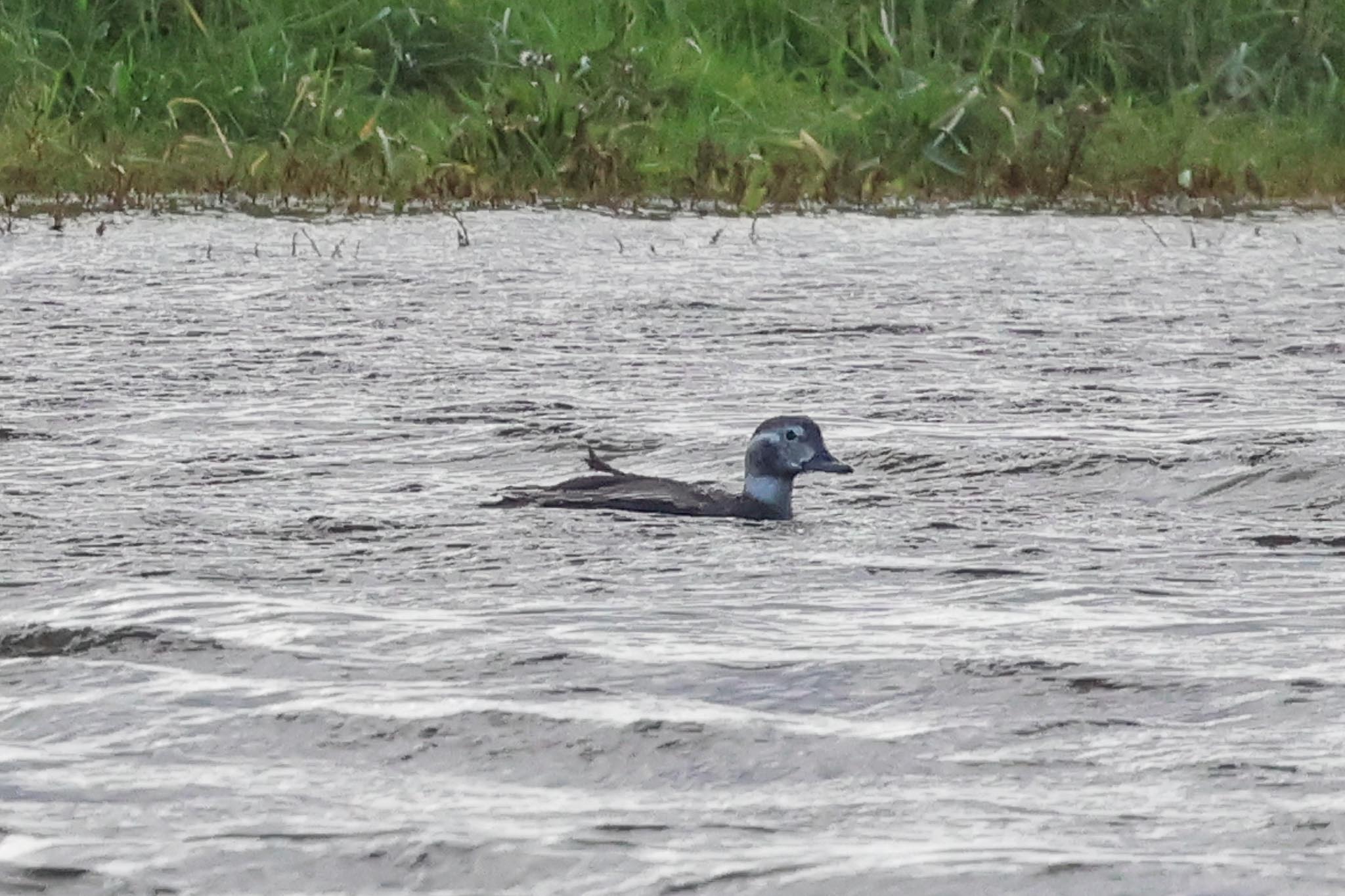
We quickly picked up the Long-tailed Duck on the pool. It was diving continually, but we eventually all got a good look at it in the scopes. A young bird, it lacks the long tail which is only seen on adult males, but a nice bird to see and normally found out to sea at this time of year. A Little Grebe was diving on the far edge of the water.
A small flock of Snow Buntings flew up over Little Eye, but immediately dropped down again behind. We figured they might have landed on the beach the other side, so we walked on and up to the top, and found the Snow Buntings feeding out on the shingle beyond. We walked down for a closer look – they were scuttling round in smaller groups and often impossible to see against the stone, but we eventually counted ten together. They are just arriving for the winter now – this is the biggest flock we have seen so far this autumn.
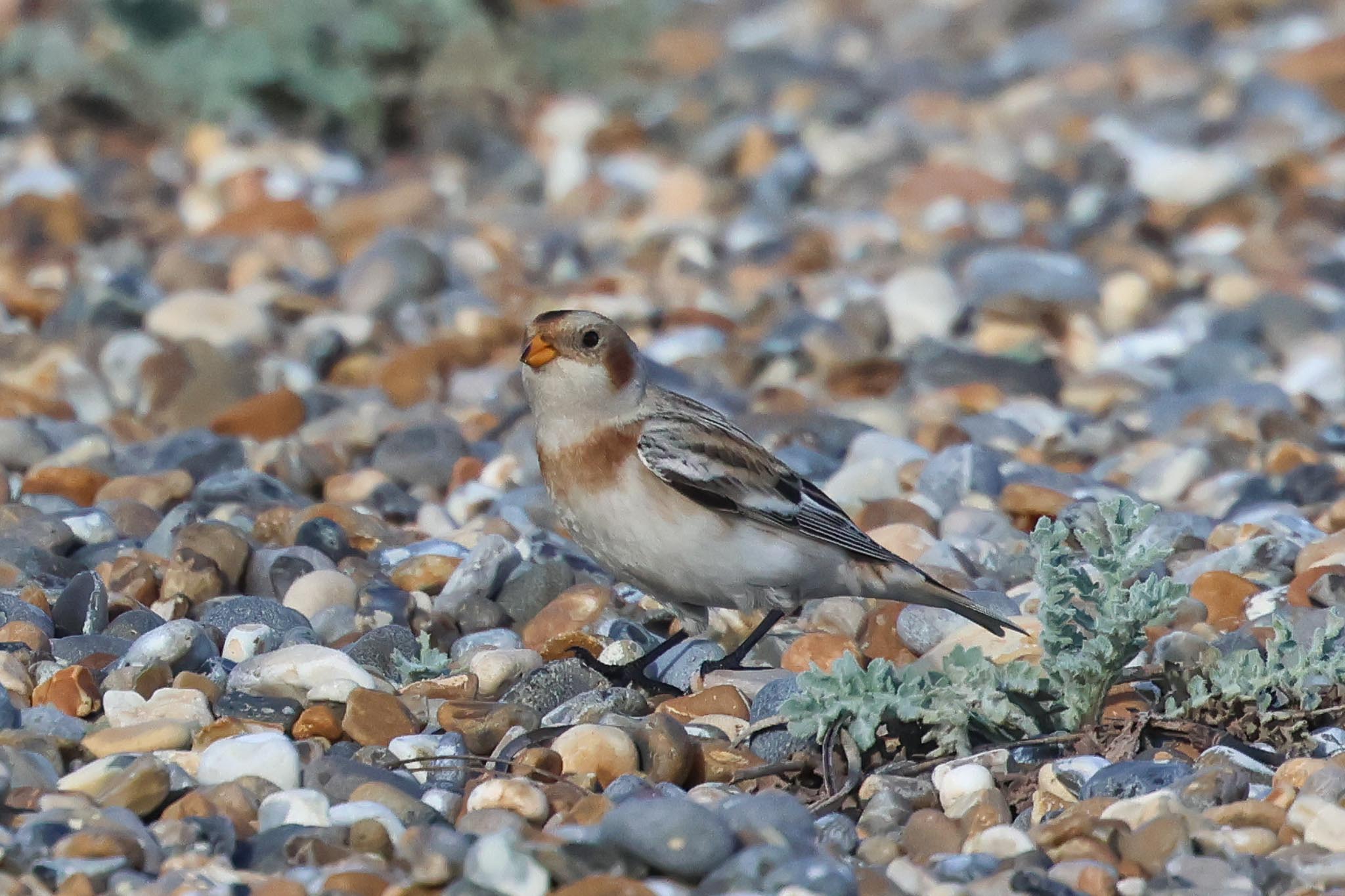
Scanning the sea from the top of Little Eye, we picked up a female Eider diving just off the beach with Cormorants. It came up with a shellfish at one point which it was crunching on which allowed us to get it in the scopes. A single Guillemot appeared too, on the sea just beyond the beach, preening. There were still a few ducks moving offshore, and several more flocks of Pink-footed Geese flew in overhead as we were standing here.
We packed up to go and watched first a Meadow Pipit feeding on the shingle just along the edge of the grass and then a pair of Stonechats, which flicked from stem to stem ahead of us and perched up nicely as we walked back. There was some other wildlife to see here too – a late Migrant Hawker dragonfly over the grass and some large Parasol mushrooms in the field opposite back where we had parked.
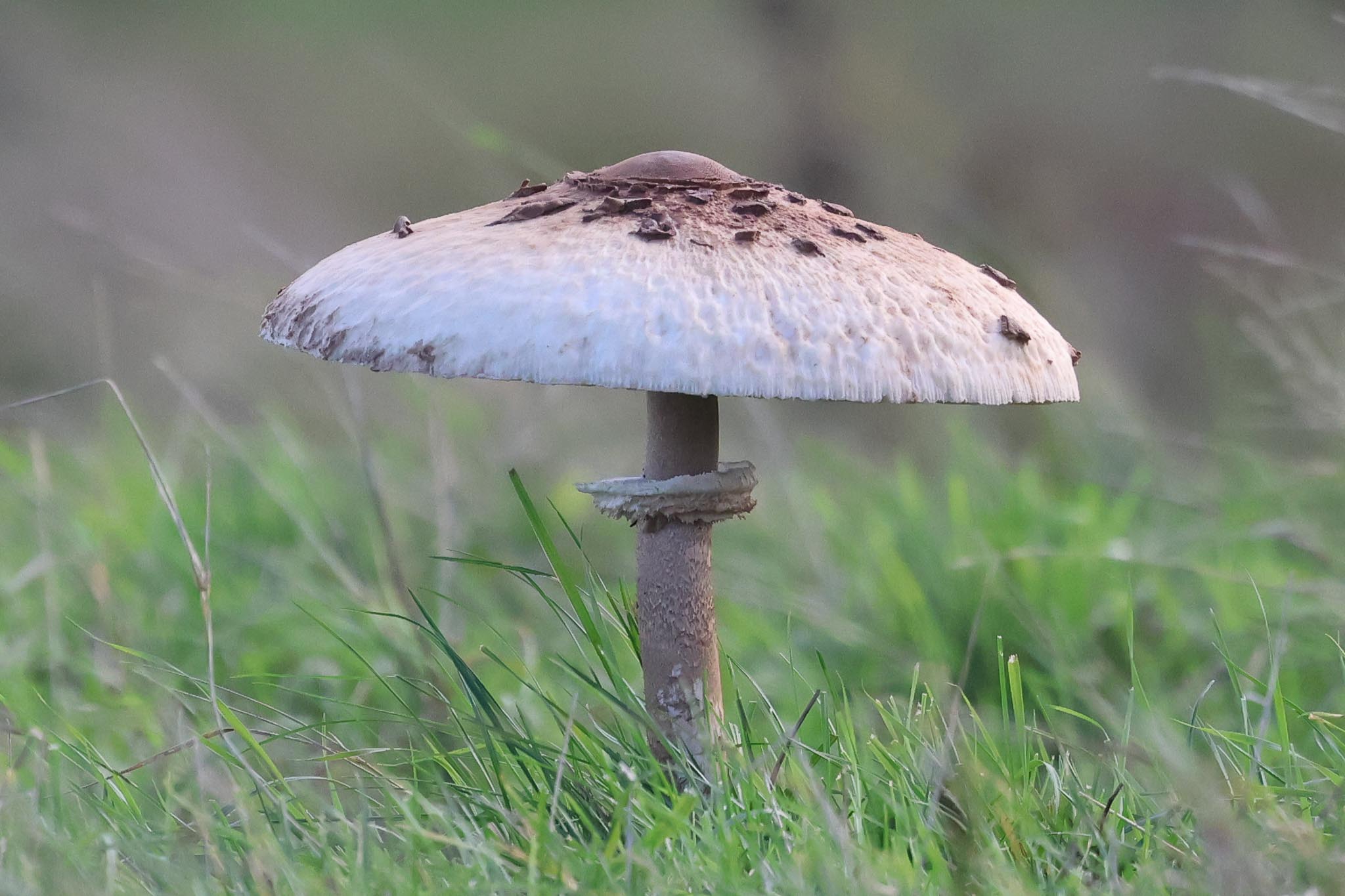
We had a bit of time still before lunch, so we decided to head back to Walsey Hills and walk in along the footpath. The NOA staff were just doing some tidying up, but we were surprised to find they had taken down the feeders here. There have been reports of rats here recently. Perhaps unsurprisingly, the bushes were quiet and there were no finches today.
We continued on along the footpath and had a quick look out over the fields at the back. It was bright and sunny and a Common Buzzard was circling up over the front of the Hangs. We noticed another bird circling above it, a Short-eared Owl! It flew back towards us, high up, with its distinctive stiff-winged rowing flight action, before we lost sight of it over North Foreland plantation heading towards the reserve. Possibly another fresh arrival looking for somewhere to feed. A Common Darter dragonfly was basking in the sunshine on a nearby post.
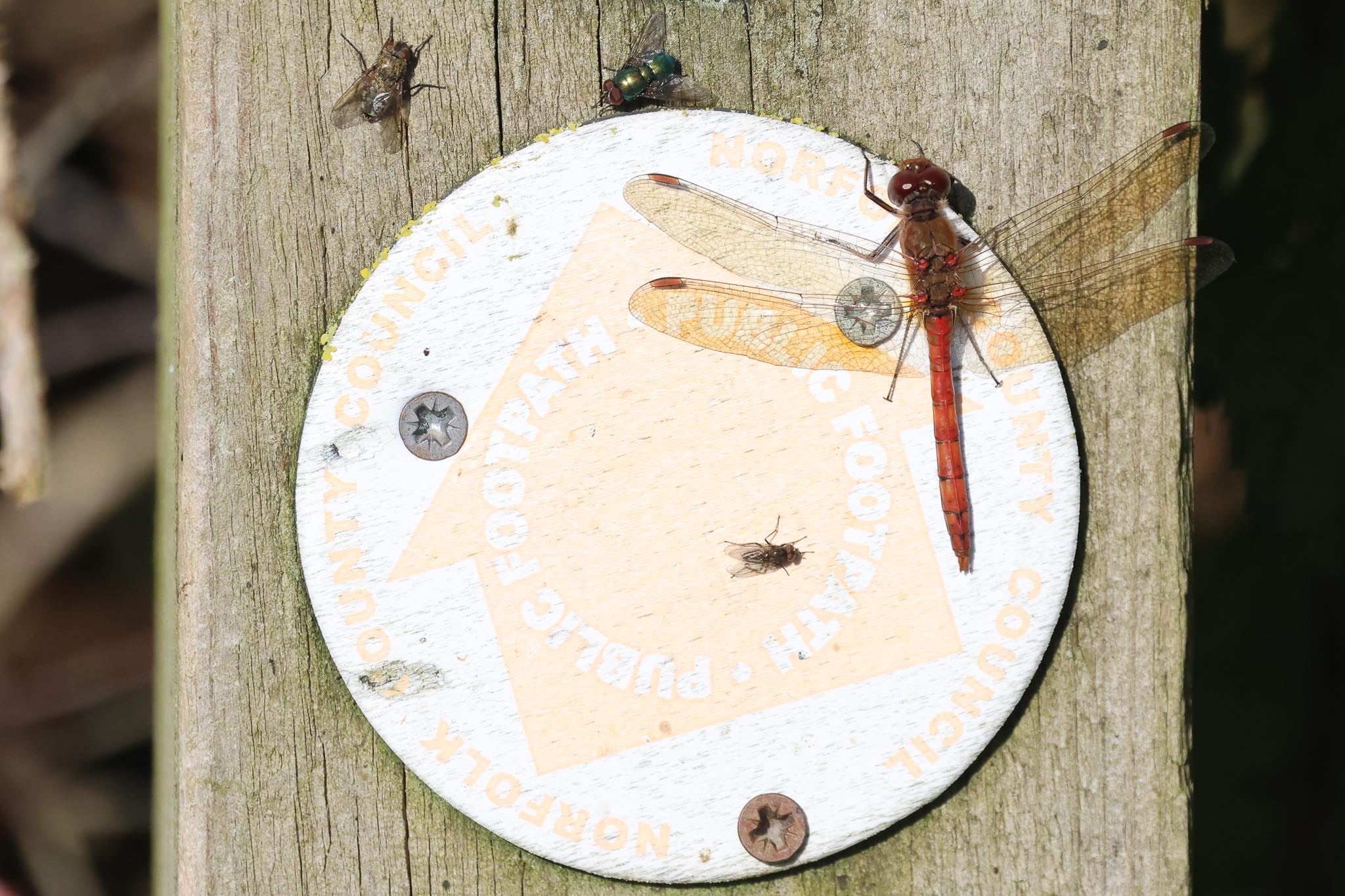
Walking back to the road, we crossed over and had a quick scan of the grazing marshes from the start of East Bank. As we walked up, a House Martin flew away over the reedbed. Most have long since left us for Africa, but there are increasingly records of lingering birds into November. A Little Grebe was down in the catchwater drain.
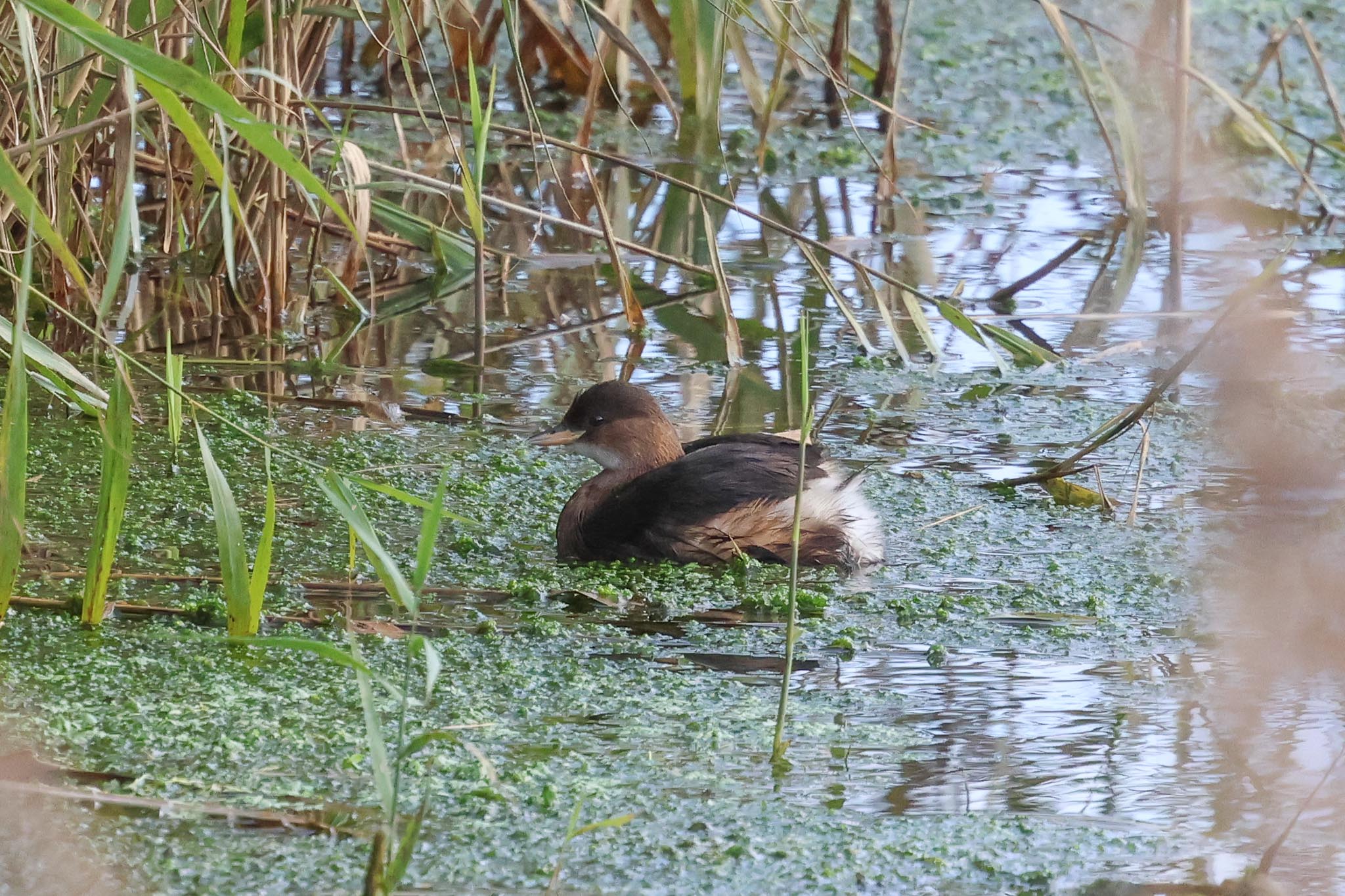
Two Marsh Harriers were hanging in the air over Pope’s reedbed, one with orange wing-tags but too far off to read, and they kept drifting over and disturbing all the birds on the pools. There were lots of ducks – Wigeon, Teal, Shoveler, Gadwall, a couple of Shelduck, and we picked out a small group of Pintail on Pope’s Pool. A couple of Ruff were feeding out on the grass with Lapwings. Three Dunlin and two Black-tailed Godwits were flushed by the harriers and flew off over the bank.
We drove round to the Visitor Centre for lunch and a hot drink. Someone has chopped the trees which provide shelter from the wind in the picnic area right down again (including the willows where we watched the Willow Emerald damselflies earlier in the autumn), but thankfully it wasn’t too windy today and we were still able to sit out to eat our packed lunches – in the sunshine in November!
After lunch, we headed back east again along the coast to Kelling. At the start of the lane, a Fieldfare flew over and landed in the top of the big fir tree by the path. We stopped and got it in the scope, with several Chaffinches dropping in too. As we started to walk on, under the fir tree, we could hear a Chiffchaff now calling above us. We stepped back out from under the tree and could see it perched in the sunshine on the edge of the branches.
There were lots of Blackbirds still in the lane, which flew back and forth across the track ahead of us. There had been a big arrival of thrushes in the last few days, coming in from the Continent for the winter, and although most had moved on, some had stopped to feed up on all the berries in the hedges. There were a few more Chaffinches here too, another species which breeds here but also sees numbers increase significantly in winter.
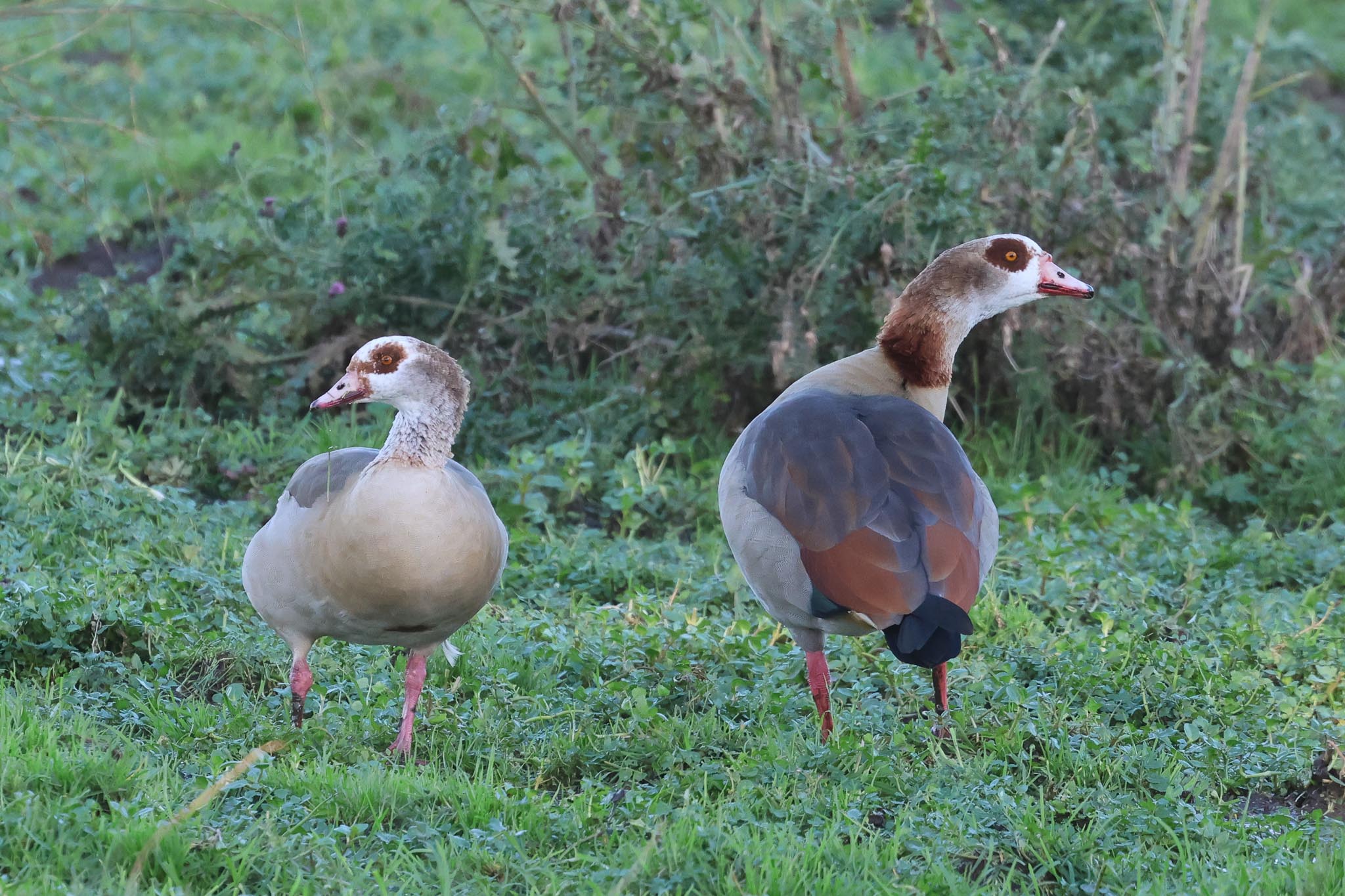
Down to the gate beyond the copse, and a pair of Egyptian Geese and several Moorhen were out on the flooded grass. The Estate here is a shooting estate – so there were several Pheasants at the front and lots of Red-legged Partridges in the field beyond, all released to be shot. A Redwing flew over and another Fieldfare landed in the trees on the edge of the copse briefly.
There was not much on the pool today – a few Shoveler and Mallard. A colour-ringed young Mute Swan had been ringed at the nest at a pond just a couple of miles inland in August 2022, and remained there until at least March this year, after which presumably it was evicted by its parents. It had only been seen once since, at Cley in mid October, before appearing here.
The path was flooded but we just managed to get around and down to the beach. A few Linnets were flying back and forth but otherwise the bushes were quiet, so we walked up onto the shingle for another quick look at the sea. The usual small group of about 20 Common Scoter were still on the sea just offshore, but a single female Tufted Duck with them was more of a surprise. Two drake Goldeneye were on the sea too, before they flew off west.
Time was getting on and we had one more thing we wanted to do this afternoon, so we made our way back to the minibus and drove round to Blakeney Freshes. We were hoping there might be a Short-eared Owl here, so some of the group elected to stay at the gate to scan the rest of us walked out to check the grazing marshes. There were lots of Marsh Harriers gathering before heading in to roost, and Common Buzzards of various shades, including both a very dark one and a very pale one perched in bushes. A large flock of Starlings was feeding in wet grass, and kept flying round in a mini murmuration, back and forth from the reeds on the other side of the bank.
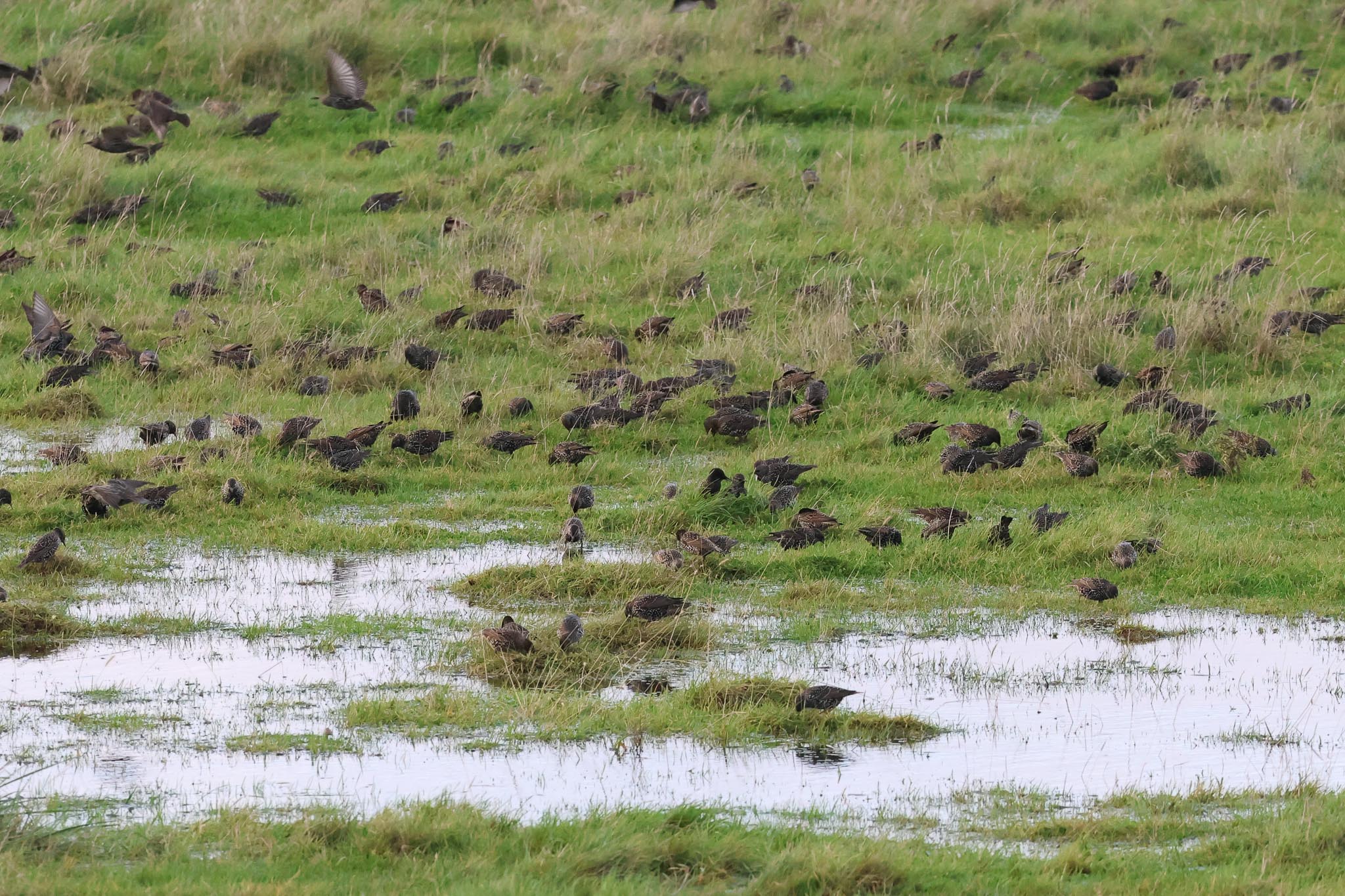
There have been a good number of Cattle Egrets here in recent days and now they came up from behind the reeds, from one of the fields were the cows were feeding. We counted 22 as they swirled round, before they dropped down again out of view. A Hen Harrier came up briefly, very distant over the back of the beach, so we walked on to see if we could find it again. Before we got too far, the Hen Harrier appeared again, this time lingering in view so we could all get it in the scopes. A ringtail, we could see the white square at the base of its tail as it turned. At one point, a Marsh Harrier appeared next to it, the Hen Harrier noticeably much smaller and slimmer.
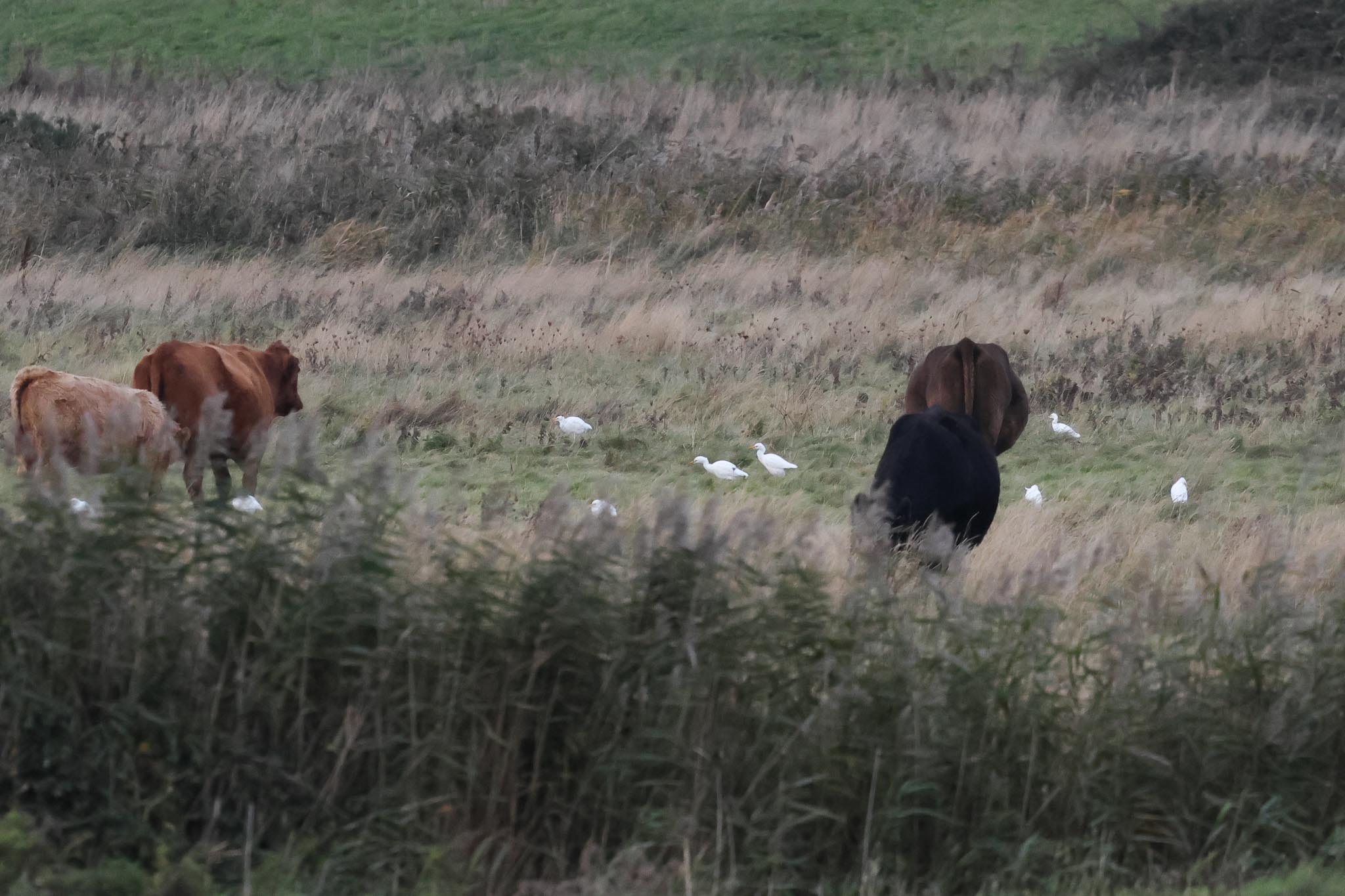
We carried on until we could get the scopes on the Cattle Egrets through a gap in the reeds. We could see them feeding around the feet of the cows now. We heard Bearded Tits calling in the reeds the other side of the bank, and had a quick glimpse of one as it disappeared in, but it was breezy and they were keeping down. The light was starting to go too – time to head back. As we walked back, those who had stayed at the gate picked up a Short-eared Owl which flew round over the grass briefly behind the rest of us, but by the time we had got back to them it had disappeared again.
It had been a very good first day – hopefully more to come tomorrow.
















